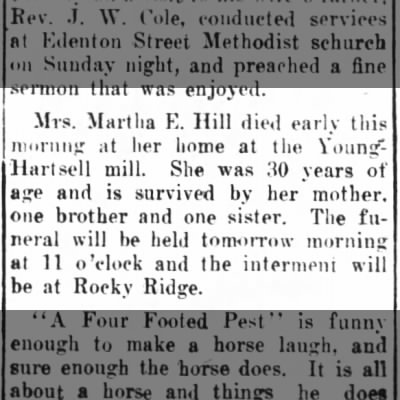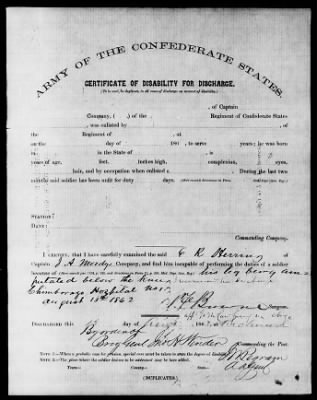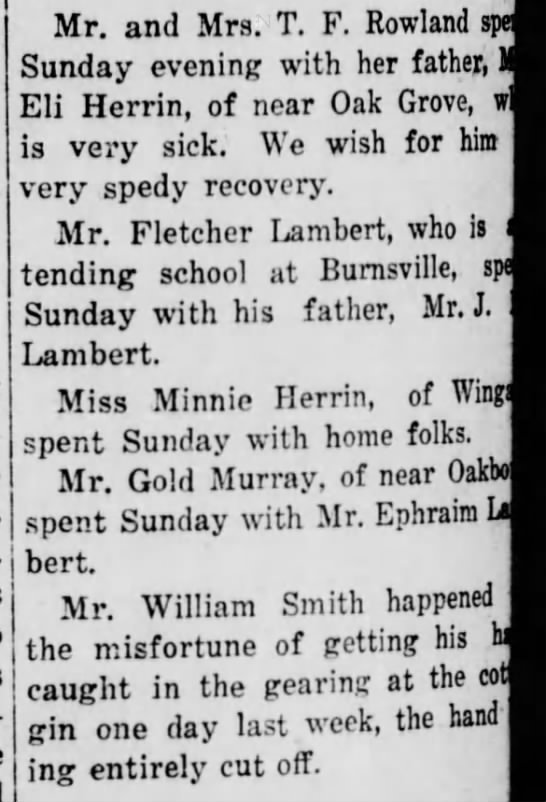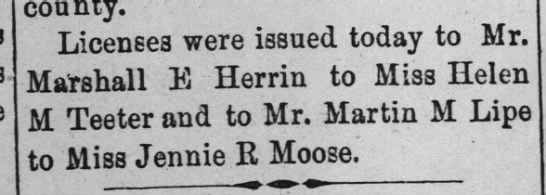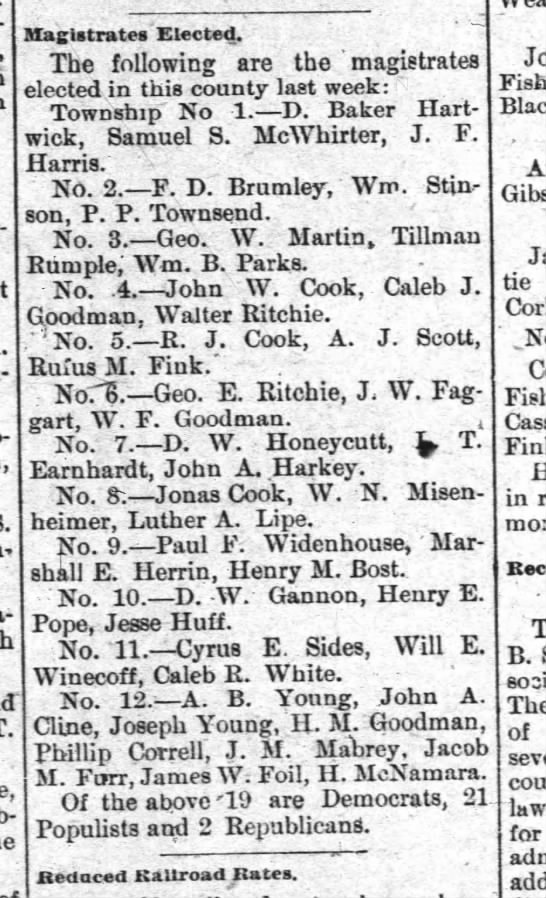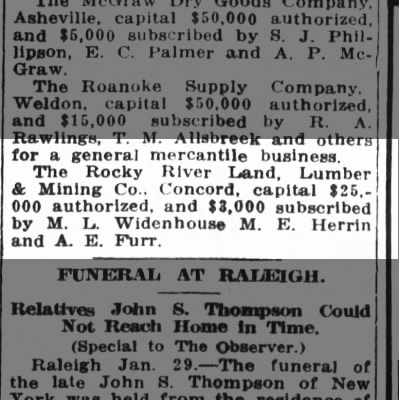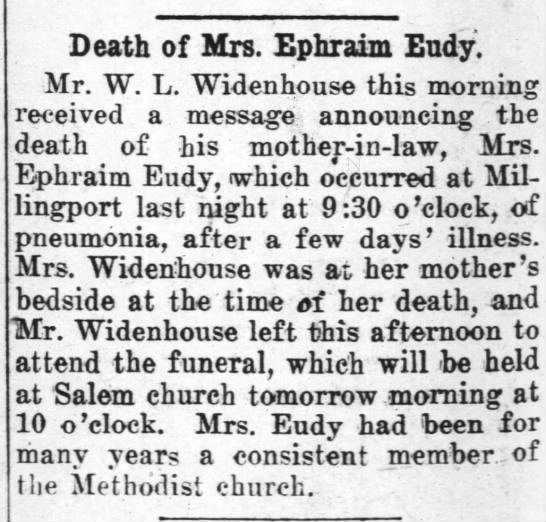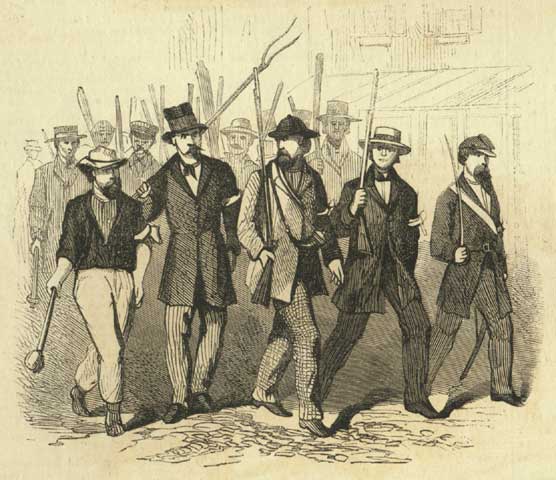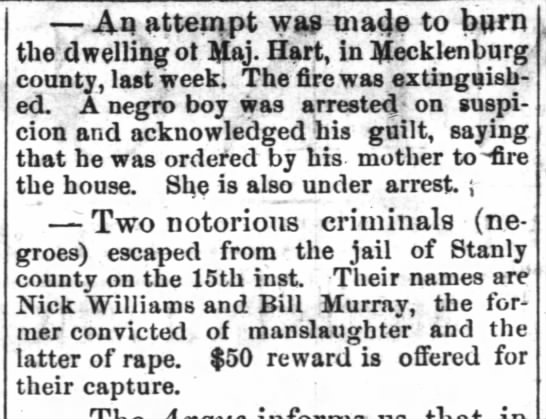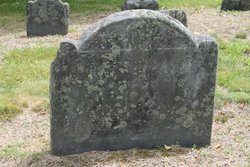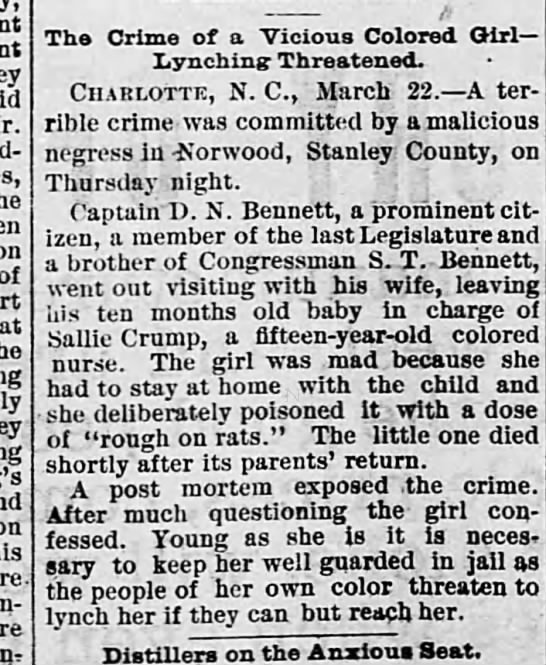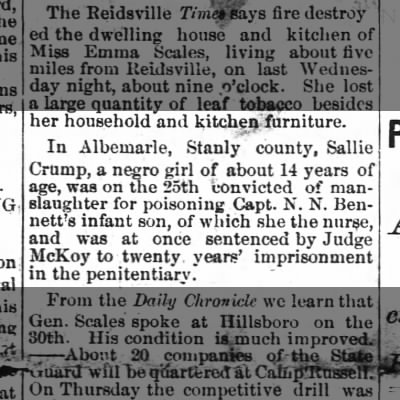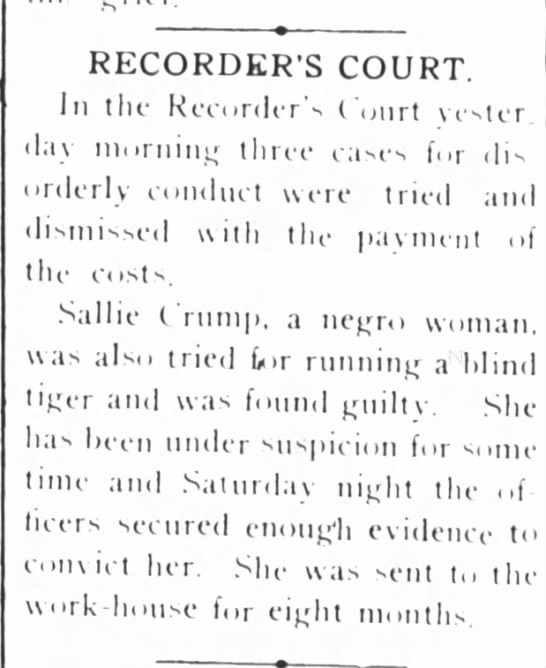Sunday Black Sheep is a blogging prompt from Geneabloggers.com, of which I am a member.
Today, my Subject is Joseph Marshall Herrin alias Marshall E. Harwood.
Joseph Marshall Herrin was born in Stanly County on April 11, 1873. As far as we know, he was the son of Elias Ransom Herrin and his third wife, Jemima Motley Herrin. There were two Eli Herrin's around in the area at this time, Eli R. and Eli N. . This Eli was born in 1838 and died in 1933 and was the son of Wiley Ephraim Herrin and Elizabeth "Betsy" Almond. Eli's has a story of his own, and not anywhere near that of his son, Joe. The only census that Joe appears in as a child is at 6 years old in 1880.
Tena and Elizabeth were Eli's daughters by his first wife, Sarah, who was a sister of Jemima Motley Herrin. Sarah, Joseph, Mary and Martha, were all by Jemima.
After that, his next appearance in records would be his marriage to 15 year old Daisy Starnes, daughter of Frederick Fincher Starnes II and Mary Louise Byram Starnes.
His story is easier told in a time line from here.
February 23, 1893 - Marriage to Daisy Louise Starnes
![Daisy Starnes Herrin Death Certificate]()
Daisy L. Starnes was only 15 when she married Joe Herrin. He was 23. Her father, my second Great-Grandfather, Frederick Fincher Starnes, had to sign his permission for the young girl to marry. I often wonder why he did. Joe, at this time, was wanted for theivery in Stanly County, and not a good character, quite the opposite of Finch Starnes, a sucessful and diligent businessman, farmer, miller, and member of Rocky River Presbyterian Church.
After that, both Daisy and Joe fell off the map for me. It was through newspaper clippings that I found out more about them. I did find mention of Joe Herrin in land records.
He appears in Stanly County in a few land records concerning an inheritance from the death of his grandfather, Ransom Motley. In one of these, where he is selling a plot of land to his sister, Christena Herrin Harwood, we know that he was alive at least until 1904.
But his adventures were more tangled than that. His tale can be told more with a timeline.
March 2, 1893 Marriage to Daisy L. Starnes
![]()
![]()
December 12, 1893 Joe is in jail and has escaped.
![]()
July 7, 1894
![]()
![]()
![]()
Daily Concord Standard
12 Dec 1893, Tue • Page 1
After his unfortunate injury, Joe had a sudden change of heart. He wrote to the manager of the county chain gang, and promised to be a good boy, and come back after recover to do his time.
September, 1894
![]()
Daily Concord Standard
18 Sep 1894, Tue • Page 1
![]()
Joe stood good to his word, and showed back up after his recovery to do his time. However, he missed Professor Zeno and his ballons. Oh my.
Oct 1, 1894 Back on the Chain Gang.
![]()
![]()
Daily Concord Standard
6 Jun 1894, Wed • Page 2
August 1894 An escaped Joe enjoys his social life.
![]()
May 28, 1896 Joe has married a second time, while Daisy is still alive and is denying his identity, now going by "Marshall Harwood."
![]()
28 May 1896, Thu • Page 2
The Standard
After Joe Herrin married the widow Pethel, otherwise known as Mary Catherine Rogers Pethel, her brother-in-law J. V. Pethel began a search for him, as he was wanted for bigamy. Daisy was still alive and living either in Mecklenburg County or with her parents on the west side of Cabarrus. This article also reveals that Joe had already changed his name to Marshall Harwood.
How he chose this name is still a mystery. Was it because of his brother-in-law, David Harwood? Did he want people to think he was the real Marshall Harwood, another young man in the area about the same age as Joe? Or did he believe he was really a Harwood?
May 28, 1896 J V Pethel searches for the bigamist, Joe.
![]()
The Charlotte Observer
28 May 1896, Thu • Page 2
January 27, 1897 Joe was up to his old tricks.
![]()
Soon after, Joe was found and the newspapers claimed his punishment for bigamy was lenient, and he was allowed to obtain a divorce from Daisy Starnes Herrin. This article suggests she was still alive at this juncture and a brief outline of the life of Joe Herrin is given. His divorce was said to be obtain in Stanly County. This, I am going to have to look for. I may have to contact Utah for a glimpse of this. After his divorce, he married Mary Catherine Rogers Pethel a second time. This one legally.
March 18, 1897
![]()
The Standard
Concord, North Carolina)18 Mar 1897, Thu • Page 2
The second marriage of Joe Herrin and Mary Catherine Rogers Pethel did not last long either. In 1898, he made his way to Union County, NC and married his third wife, Mary Ellen Thomas. This time using his new moniker, "Marshall Harwood."
May 12, 1898
![]()
Life then became a little more complicated for Joe Herrin, alias Marshall Harwood. His former bride was found dead, her marriage to him unrecognized, as she was referred to as the widow of Frank Pethel.
April 13, 1899 Mary Catherine Rogers Pethel Herrin found dead.
![]()
The Mount Airy News
13 Apr 1899, Thu • Page 1
In this reprint from The Salisbury Sun, Joe is mentioned, but his last name incorrectly given as Hearne instead of Herrin, and he was unflatteringly referred to as "a bigamist named Hearne".
![]()
Luckily for Joe/Marshall, the coroner determined his latest bride had died of a cerebral hemmorhage. He was not arrested for murder, although foul play was obviously suspected.
![]()
The Concord Times
6 Apr 1899, Thu • Page 3
Below is another article reporting her death, but it gives the general location in modern terms, of where she lived. "Glass" as a community, was a mystery. Glass was apparently "below China Grove".
![]()
The Salisbury Truth
Apr 1899, Wed • Page 5
At this point, I believe I should insert some information concerning the unfortunate Mrs. Pethel. As was mentioned, she was a widow with 8 children. She was the mother of 10 in all, possibly more, with two having died prior to their mother, one daughter the same year.
Mary Catherine Rogers was born on September 2, 1849 to John Rogers and Wilhemina Sloop Rogers. On Nov 26, 1868, at the age of 19, she married James Franklin Pethel, known as Frank. The couples 10 known children were:
1) Edward Long Pethel 1869-1950
2) Elizabeth "Lizzie" Pethel 1870 - 1943
3) Martha Jane "Jennie" Pethel 1873 - 1899
4) Esther Matilda Pethel 1876 - 1969
5) Reese Henderson "Henry" Pethel 1877 - 1945
6) Charles Brown Pethel 1880- 1962
7) Robert O. Pethel 1881- unknown. Died as a child.
8) Archie David Pethel 1882-1928
9) Richard C Pethel 1887 - 1907
10) John Wilson Pethel 1890 - 1962
Their father, Frank Pethel, died on April 26, 1894, of a train accident.
Mary Catherine died March 1, 1899, of an apparent brain aneurism.
![]()
She is buried at Centergrove Lutheran Church in Cabarrus County.
Under his new moniker of Marshall Elmer Harwood, Joseph Marshall Herrin began a new leaf.
He married Mary Ellen Thomas in Union County in 1898, before his second wife, the former Mrs. Pethel died. He divorced Daisy, and what became of her is unknown after her trial for fornication, where she was found "Not Guilty".
Joe, alias Marshall, gave his parents names as "Frank and Laura" Harwood at his marriage to Mary Ellen.
A land record in 1904 between he and his sister Tena Herrin Harwood, lists his residence as "Anson County", but Marshall and Mary Ellen are not found in the 1900 census.
They are found in later census records, however, and had 4 children.
During this time, they lived in New Salem, Union County, near her parents.
They did not make it to the next census and at sometime during the decade, they moved to the Kannapolis area.
Marshall had stayed in this area when he was said to have been working for a Mr. Sloop and nosing about the skirts of Mrs. Pethel.
March 14, 1928 The Death of Mary Ellen
Mary Ellen Thomas Harwood, passed away on March 14, 1928, in Kannapolis, Cabarrus County, North Carolina. She was buried, however, at Herrin's Grove Primitive Baptist Church in Stanly County, along with her inlaws and other members of the Herrin family.
Joseph Marshall Herrin aka Marshall Elmer Harwood, did not stay a single man long. On October 5, 1928 Marshall E. Harwood married Jennie Lenorah Harris Hall, a widow.
October 5, 1928 Marriage to Jennie Hall
The above record is from familysearch.com. Joe aka Marshall, went all the way from Kannapolis to Davidson County to find his new bride. She was the widow of William Etheldred Hall and like Mary Catherine Rogers Pethel, a mother of 8 children. She was the daughter of Gabriel Postell Harris and wife Nora, of Montgomery County, NC. The couple may have known each other previously.
She had lost her husband in June of 1927. He was from Stanly County and had moved the family to Davidson. William E. Hall also appears in my family tree as the brother of one of my Second Great-Grandfathers.
Joe's last marriage was about as brief as his first two. He passed away on November 20, 1929.
November 20, 1929 Death of Joseph Marshall Herrin aka Marshall E. Harwood.
He was buried in Stanly County, next to the mother of his children and his longest lasting wife, Mary Ellen Thomas Harwood, and with the rest of the Herrin's at Herrin's Grove.
To corroborate this, I checked the files on the Herrin family in the library history room. This verified that the man named "Marshall Harwood" on the tombstone at Herrin's Grove was the same born Joseph Marshall Herrin, son of Eli Ransom Herrin.
![Marshel E Harwood]()
Joe's death certificate can not be located. He traveled around between counties so much, it's unclear where he died. But he was buried with family.
But why the name Marshall E. Harwood? There was a 'real' Marshall Harwood in the area, about the same age as Joe, Joseph, Josephus, as his name was alternately seen. This was William Marshall Harwood, son of Ephraim Eudy and Celia Ann Harwood, who married Rosa Moose. This Marshall Harwood was born in 1873 and lived Albemarle. Was it this man's identity he was attempting to assume?
There was also a Marshall E. Herrin in the area, about the same age as Joe as well, born June 20, 1873. This Marshall was his first cousin, son of John Franklin Herrin, Eli Ransom's brother. The real Marshall Elmond Herrin was born in Stanly County, moved to Cabarrus County, and lastly to Charlotte, in Mecklenburg County.
![Image result for Name thief]()
For whatever reason Joe chose his new name, it is what he passed down to his children and grandchildren. Never were they Herrins again.
Only son James Franklin Harwood was born September 26, 1900 in Union County and died at the age of 80 in 1981. After growing up in New Salem, he raised his family in China Grove and later moved to Kannapolis. James married a Miss Dezzie Holt, daughter of David I Holt of Cabarrus County and they had 4 children, David, Jewel, Ruby and Patricia.
Daughter Lula Mae was born in 1903.
Daughter Mary Alice was born in 1904 and married Robert Otto Gurley, they had 4 children, raised in China Grove and Kannapolis.
Youngest daughter, Lundy Harwood, was born in 1908 and married George Chewning. They had 5 children.
Today, my Subject is Joseph Marshall Herrin alias Marshall E. Harwood.
Joseph Marshall Herrin was born in Stanly County on April 11, 1873. As far as we know, he was the son of Elias Ransom Herrin and his third wife, Jemima Motley Herrin. There were two Eli Herrin's around in the area at this time, Eli R. and Eli N. . This Eli was born in 1838 and died in 1933 and was the son of Wiley Ephraim Herrin and Elizabeth "Betsy" Almond. Eli's has a story of his own, and not anywhere near that of his son, Joe. The only census that Joe appears in as a child is at 6 years old in 1880.
| Name: | Eli R. Herrin | ||||||||||||||||||
|---|---|---|---|---|---|---|---|---|---|---|---|---|---|---|---|---|---|---|---|
| Age: | 43 | ||||||||||||||||||
| Birth Year: | abt 1837 | ||||||||||||||||||
| Birthplace: | North Carolina | ||||||||||||||||||
| Home in 1880: | Almonds, Stanly, North Carolina | ||||||||||||||||||
| Race: | White | ||||||||||||||||||
| Gender: | Male | ||||||||||||||||||
| Relation to Head of House: | Self (Head) | ||||||||||||||||||
| Marital Status: | Married | ||||||||||||||||||
| Spouse's Name: | Gemima Herrin | ||||||||||||||||||
| Father's Birthplace: | North Carolina | ||||||||||||||||||
| Mother's Birthplace: | North Carolina | ||||||||||||||||||
| Neighbors: | View others on page | ||||||||||||||||||
| Occupation: | Farmer | ||||||||||||||||||
Cannot read/write: Blind: Deaf and Dumb: Otherwise disabled: Idiotic or insane: |  | ||||||||||||||||||
| Household Members: |
|
Tena and Elizabeth were Eli's daughters by his first wife, Sarah, who was a sister of Jemima Motley Herrin. Sarah, Joseph, Mary and Martha, were all by Jemima.
After that, his next appearance in records would be his marriage to 15 year old Daisy Starnes, daughter of Frederick Fincher Starnes II and Mary Louise Byram Starnes.
His story is easier told in a time line from here.
February 23, 1893 - Marriage to Daisy Louise Starnes

Daisy L. Starnes was only 15 when she married Joe Herrin. He was 23. Her father, my second Great-Grandfather, Frederick Fincher Starnes, had to sign his permission for the young girl to marry. I often wonder why he did. Joe, at this time, was wanted for theivery in Stanly County, and not a good character, quite the opposite of Finch Starnes, a sucessful and diligent businessman, farmer, miller, and member of Rocky River Presbyterian Church.
After that, both Daisy and Joe fell off the map for me. It was through newspaper clippings that I found out more about them. I did find mention of Joe Herrin in land records.
He appears in Stanly County in a few land records concerning an inheritance from the death of his grandfather, Ransom Motley. In one of these, where he is selling a plot of land to his sister, Christena Herrin Harwood, we know that he was alive at least until 1904.
But his adventures were more tangled than that. His tale can be told more with a timeline.
March 2, 1893 Marriage to Daisy L. Starnes

Concord, North Carolina
Thu, Mar 2, 1893 – Page 3
April 13, 1893 Joe is wanted in Stanly County for stealing and has hidden out at his father-in-laws house (Frederick Fincher Starnes), having been married only a few months. His wiley tricks are already making headlines..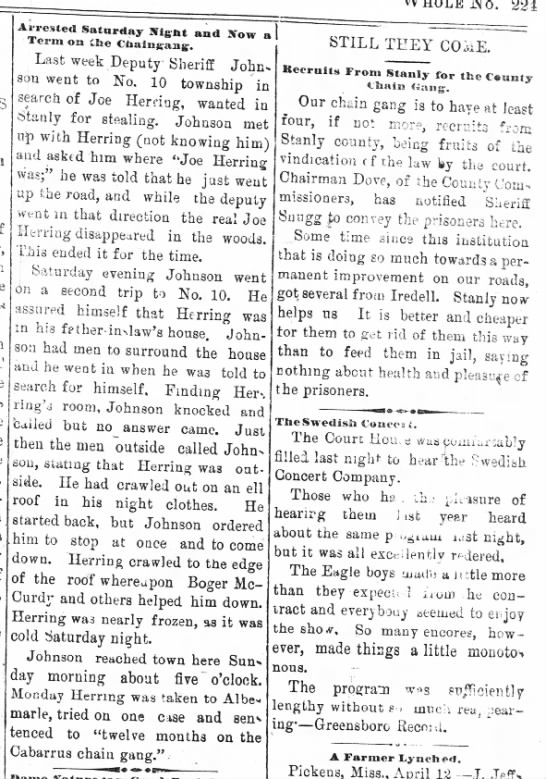
Concord, North Carolina
Thu, Apr 13, 1893 – Page 1
December 12, 1893 Joe is in jail and has escaped.

Concord, North Carolina
Tue, Dec 12, 1893 – Page 1
July 7, 1894

Raleigh, North Carolina
Thu, Jun 7, 1894 – Page 3
August 1, 1894 Joe gets hit in the head. Did it knock any sense into him?

December 1893

Daily Concord Standard
12 Dec 1893, Tue • Page 1
After his unfortunate injury, Joe had a sudden change of heart. He wrote to the manager of the county chain gang, and promised to be a good boy, and come back after recover to do his time.
September, 1894
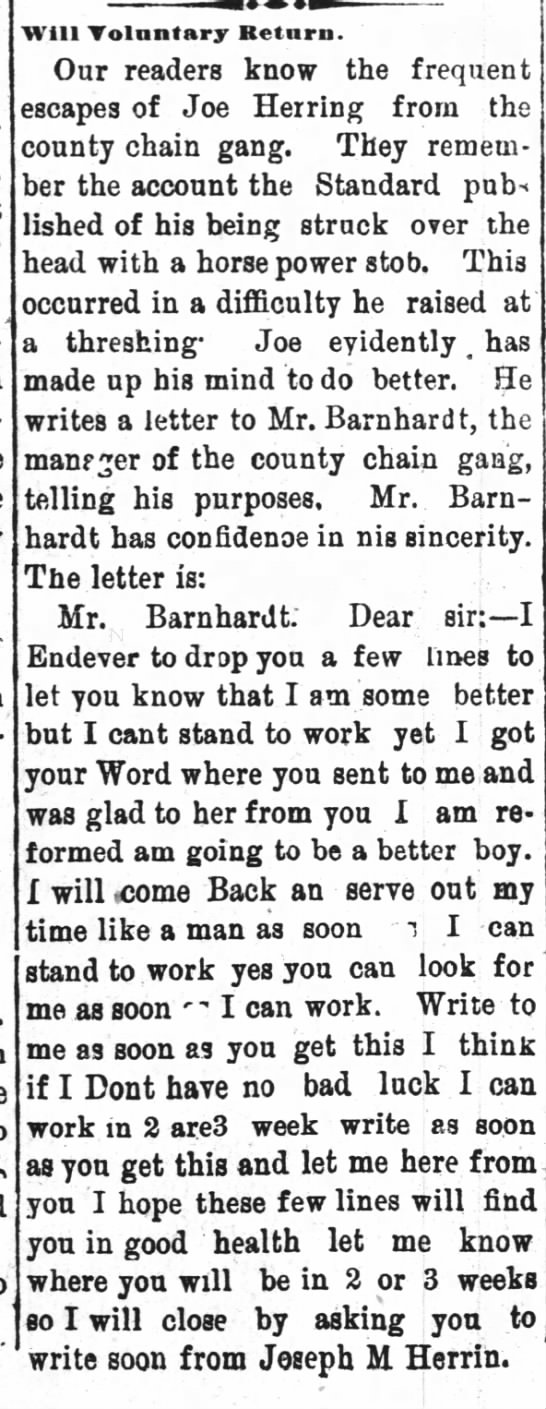
Daily Concord Standard
18 Sep 1894, Tue • Page 1

Joe stood good to his word, and showed back up after his recovery to do his time. However, he missed Professor Zeno and his ballons. Oh my.
Oct 1, 1894 Back on the Chain Gang.
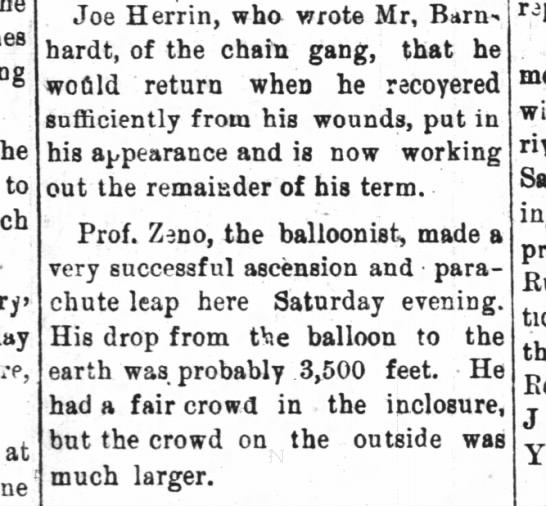
Daily Concord Standard, 1 Oct 1894, Mon, Page 1
June 6, 1894 Meanwhile, Daisy did not wait.
Daily Concord Standard
6 Jun 1894, Wed • Page 2
August 1894 An escaped Joe enjoys his social life.

Concord, North Carolina
Wed, Aug 1, 1894 – Page 1
May 28, 1896 Joe has married a second time, while Daisy is still alive and is denying his identity, now going by "Marshall Harwood."

28 May 1896, Thu • Page 2
The Standard
After Joe Herrin married the widow Pethel, otherwise known as Mary Catherine Rogers Pethel, her brother-in-law J. V. Pethel began a search for him, as he was wanted for bigamy. Daisy was still alive and living either in Mecklenburg County or with her parents on the west side of Cabarrus. This article also reveals that Joe had already changed his name to Marshall Harwood.
How he chose this name is still a mystery. Was it because of his brother-in-law, David Harwood? Did he want people to think he was the real Marshall Harwood, another young man in the area about the same age as Joe? Or did he believe he was really a Harwood?
May 28, 1896 J V Pethel searches for the bigamist, Joe.

The Charlotte Observer
28 May 1896, Thu • Page 2
January 27, 1897 Joe was up to his old tricks.
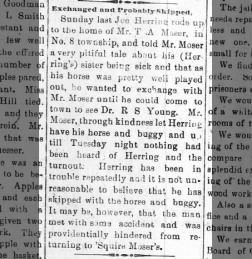
Concord, North Carolina
Wed, Jan 27, 1897 – Page 1
Soon after, Joe was found and the newspapers claimed his punishment for bigamy was lenient, and he was allowed to obtain a divorce from Daisy Starnes Herrin. This article suggests she was still alive at this juncture and a brief outline of the life of Joe Herrin is given. His divorce was said to be obtain in Stanly County. This, I am going to have to look for. I may have to contact Utah for a glimpse of this. After his divorce, he married Mary Catherine Rogers Pethel a second time. This one legally.
March 18, 1897
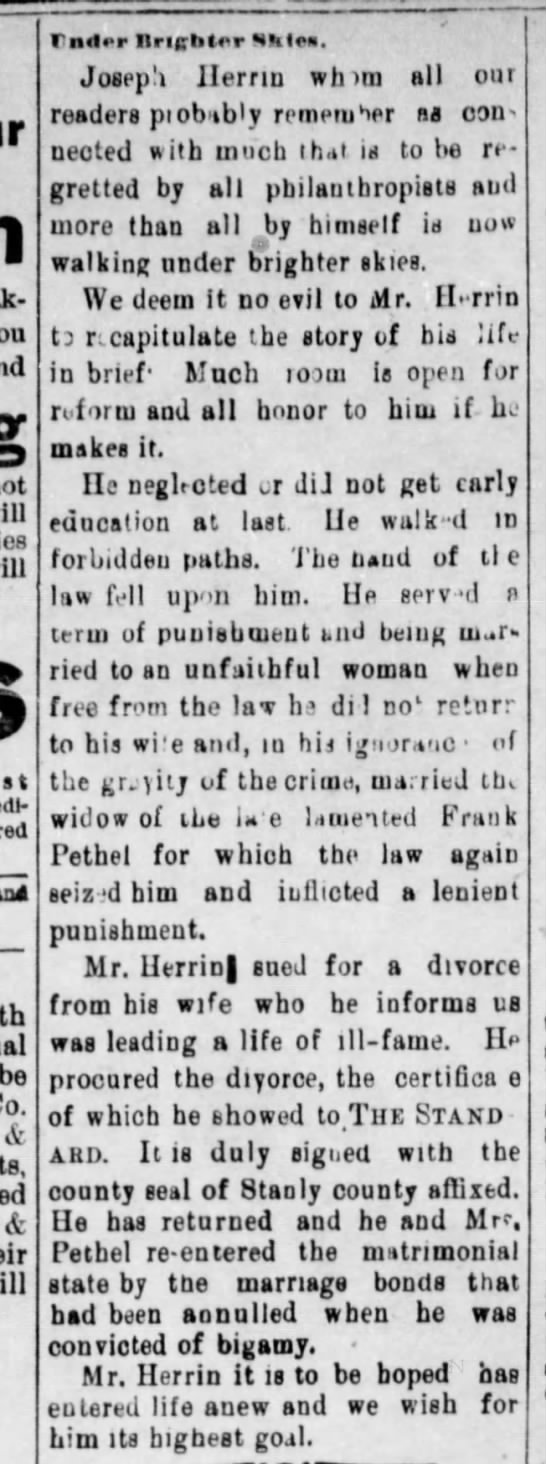
The Standard
Concord, North Carolina)18 Mar 1897, Thu • Page 2
The second marriage of Joe Herrin and Mary Catherine Rogers Pethel did not last long either. In 1898, he made his way to Union County, NC and married his third wife, Mary Ellen Thomas. This time using his new moniker, "Marshall Harwood."
May 12, 1898

Life then became a little more complicated for Joe Herrin, alias Marshall Harwood. His former bride was found dead, her marriage to him unrecognized, as she was referred to as the widow of Frank Pethel.
April 13, 1899 Mary Catherine Rogers Pethel Herrin found dead.

The Mount Airy News
13 Apr 1899, Thu • Page 1
In this reprint from The Salisbury Sun, Joe is mentioned, but his last name incorrectly given as Hearne instead of Herrin, and he was unflatteringly referred to as "a bigamist named Hearne".

Asheville Citizen, 4 Apr 1899, Tue, Page 2
Luckily for Joe/Marshall, the coroner determined his latest bride had died of a cerebral hemmorhage. He was not arrested for murder, although foul play was obviously suspected.

The Concord Times
6 Apr 1899, Thu • Page 3
Below is another article reporting her death, but it gives the general location in modern terms, of where she lived. "Glass" as a community, was a mystery. Glass was apparently "below China Grove".

The Salisbury Truth
Apr 1899, Wed • Page 5
At this point, I believe I should insert some information concerning the unfortunate Mrs. Pethel. As was mentioned, she was a widow with 8 children. She was the mother of 10 in all, possibly more, with two having died prior to their mother, one daughter the same year.
Mary Catherine Rogers was born on September 2, 1849 to John Rogers and Wilhemina Sloop Rogers. On Nov 26, 1868, at the age of 19, she married James Franklin Pethel, known as Frank. The couples 10 known children were:
1) Edward Long Pethel 1869-1950
2) Elizabeth "Lizzie" Pethel 1870 - 1943
3) Martha Jane "Jennie" Pethel 1873 - 1899
4) Esther Matilda Pethel 1876 - 1969
5) Reese Henderson "Henry" Pethel 1877 - 1945
6) Charles Brown Pethel 1880- 1962
7) Robert O. Pethel 1881- unknown. Died as a child.
8) Archie David Pethel 1882-1928
9) Richard C Pethel 1887 - 1907
10) John Wilson Pethel 1890 - 1962
Their father, Frank Pethel, died on April 26, 1894, of a train accident.
Mary Catherine died March 1, 1899, of an apparent brain aneurism.

She is buried at Centergrove Lutheran Church in Cabarrus County.
Under his new moniker of Marshall Elmer Harwood, Joseph Marshall Herrin began a new leaf.
He married Mary Ellen Thomas in Union County in 1898, before his second wife, the former Mrs. Pethel died. He divorced Daisy, and what became of her is unknown after her trial for fornication, where she was found "Not Guilty".
| Name: | Marshall E. Harwood | |||
| Birth Date: | 1873 | |||
| Age: | 25 | |||
| Spouse's Name: | Mary E. Thomas | |||
| Spouse's Birth Date: | 1875 | |||
| Spouse's Age: | 23 | |||
| Event Date: | 11 May 1898 | |||
| Event Place: | New Salem, Union Co., North Carolina | |||
| Father's Name: | Frank Harwood | |||
| Mother's Name: | Laura Harwood | |||
| Spouse's Father's Name: | James Thomas | |||
| Spouse's Mother's Name: | Mary Thomas | |||
Joe, alias Marshall, gave his parents names as "Frank and Laura" Harwood at his marriage to Mary Ellen.
A land record in 1904 between he and his sister Tena Herrin Harwood, lists his residence as "Anson County", but Marshall and Mary Ellen are not found in the 1900 census.
They are found in later census records, however, and had 4 children.
| Name: | Mary E Howard | ||||||||||||||
|---|---|---|---|---|---|---|---|---|---|---|---|---|---|---|---|
| Age in 1910: | 37 | ||||||||||||||
| Birth Year: | abt 1873 | ||||||||||||||
| Birthplace: | North Carolina | ||||||||||||||
| Home in 1910: | New Salem, Union, North Carolina | ||||||||||||||
| Race: | White | ||||||||||||||
| Gender: | Female | ||||||||||||||
| Relation to Head of House: | Wife | ||||||||||||||
| Marital Status: | Married | ||||||||||||||
| Spouse's Name: | Marshal E Howard | ||||||||||||||
| Father's Birthplace: | North Carolina | ||||||||||||||
| Mother's Birthplace: | North Carolina | ||||||||||||||
| Neighbors: | View others on page | ||||||||||||||
| Household Members: |
|
During this time, they lived in New Salem, Union County, near her parents.
| Name: | Marshall E Howard | ||||||||||||||
|---|---|---|---|---|---|---|---|---|---|---|---|---|---|---|---|
| Age: | 49 [47] | ||||||||||||||
| Birth Year: | abt 1871 [abt 1873] | ||||||||||||||
| Birthplace: | North Carolina | ||||||||||||||
| Home in 1920: | New Salem, Union, North Carolina | ||||||||||||||
| Street: | Marshville and Olive Branch Road | ||||||||||||||
| House Number: | Farm | ||||||||||||||
| Race: | White | ||||||||||||||
| Gender: | Male | ||||||||||||||
| Relation to Head of House: | Head | ||||||||||||||
| Marital Status: | Married | ||||||||||||||
| Spouse's Name: | Mary Howard | ||||||||||||||
| Father's Birthplace: | North Carolina | ||||||||||||||
| Mother's Birthplace: | North Carolina | ||||||||||||||
| Able to Speak English: | Yes | ||||||||||||||
| Occupation: | Farmer | ||||||||||||||
| Industry: | General Farm | ||||||||||||||
| Employment Field: | Own Account | ||||||||||||||
| Neighbors: | View others on page | ||||||||||||||
| Household Members: |
|
They did not make it to the next census and at sometime during the decade, they moved to the Kannapolis area.
Marshall had stayed in this area when he was said to have been working for a Mr. Sloop and nosing about the skirts of Mrs. Pethel.
March 14, 1928 The Death of Mary Ellen
Mary Ellen Thomas Harwood, passed away on March 14, 1928, in Kannapolis, Cabarrus County, North Carolina. She was buried, however, at Herrin's Grove Primitive Baptist Church in Stanly County, along with her inlaws and other members of the Herrin family.
Joseph Marshall Herrin aka Marshall Elmer Harwood, did not stay a single man long. On October 5, 1928 Marshall E. Harwood married Jennie Lenorah Harris Hall, a widow.
October 5, 1928 Marriage to Jennie Hall
| Marshall E Harwood | ||||
| Event Type: | Marriage | |||
| Event Date: | 05 Oct 1928 | |||
| Event Place: | Davidson, North Carolina, United States | |||
| Age: | 51 | |||
| Father's Name: | C M Harwood | |||
| Mother's Name: | Jemima Harwood | |||
| Spouse's Name: | Jennie Nora Hall | |||
| Spouse's Age: | 46 | |||
| Spouse's Father's Name: | Gabriel P Harris | |||
| Spouse's Mother's Name: | Nora T Harris | |||
| Digital Folder Number: | 004138305 | |||
The above record is from familysearch.com. Joe aka Marshall, went all the way from Kannapolis to Davidson County to find his new bride. She was the widow of William Etheldred Hall and like Mary Catherine Rogers Pethel, a mother of 8 children. She was the daughter of Gabriel Postell Harris and wife Nora, of Montgomery County, NC. The couple may have known each other previously.
She had lost her husband in June of 1927. He was from Stanly County and had moved the family to Davidson. William E. Hall also appears in my family tree as the brother of one of my Second Great-Grandfathers.
Joe's last marriage was about as brief as his first two. He passed away on November 20, 1929.
November 20, 1929 Death of Joseph Marshall Herrin aka Marshall E. Harwood.
He was buried in Stanly County, next to the mother of his children and his longest lasting wife, Mary Ellen Thomas Harwood, and with the rest of the Herrin's at Herrin's Grove.
To corroborate this, I checked the files on the Herrin family in the library history room. This verified that the man named "Marshall Harwood" on the tombstone at Herrin's Grove was the same born Joseph Marshall Herrin, son of Eli Ransom Herrin.

Joe's death certificate can not be located. He traveled around between counties so much, it's unclear where he died. But he was buried with family.
But why the name Marshall E. Harwood? There was a 'real' Marshall Harwood in the area, about the same age as Joe, Joseph, Josephus, as his name was alternately seen. This was William Marshall Harwood, son of Ephraim Eudy and Celia Ann Harwood, who married Rosa Moose. This Marshall Harwood was born in 1873 and lived Albemarle. Was it this man's identity he was attempting to assume?
There was also a Marshall E. Herrin in the area, about the same age as Joe as well, born June 20, 1873. This Marshall was his first cousin, son of John Franklin Herrin, Eli Ransom's brother. The real Marshall Elmond Herrin was born in Stanly County, moved to Cabarrus County, and lastly to Charlotte, in Mecklenburg County.
For whatever reason Joe chose his new name, it is what he passed down to his children and grandchildren. Never were they Herrins again.
Only son James Franklin Harwood was born September 26, 1900 in Union County and died at the age of 80 in 1981. After growing up in New Salem, he raised his family in China Grove and later moved to Kannapolis. James married a Miss Dezzie Holt, daughter of David I Holt of Cabarrus County and they had 4 children, David, Jewel, Ruby and Patricia.
Daughter Lula Mae was born in 1903.
Daughter Mary Alice was born in 1904 and married Robert Otto Gurley, they had 4 children, raised in China Grove and Kannapolis.
Youngest daughter, Lundy Harwood, was born in 1908 and married George Chewning. They had 5 children.




















